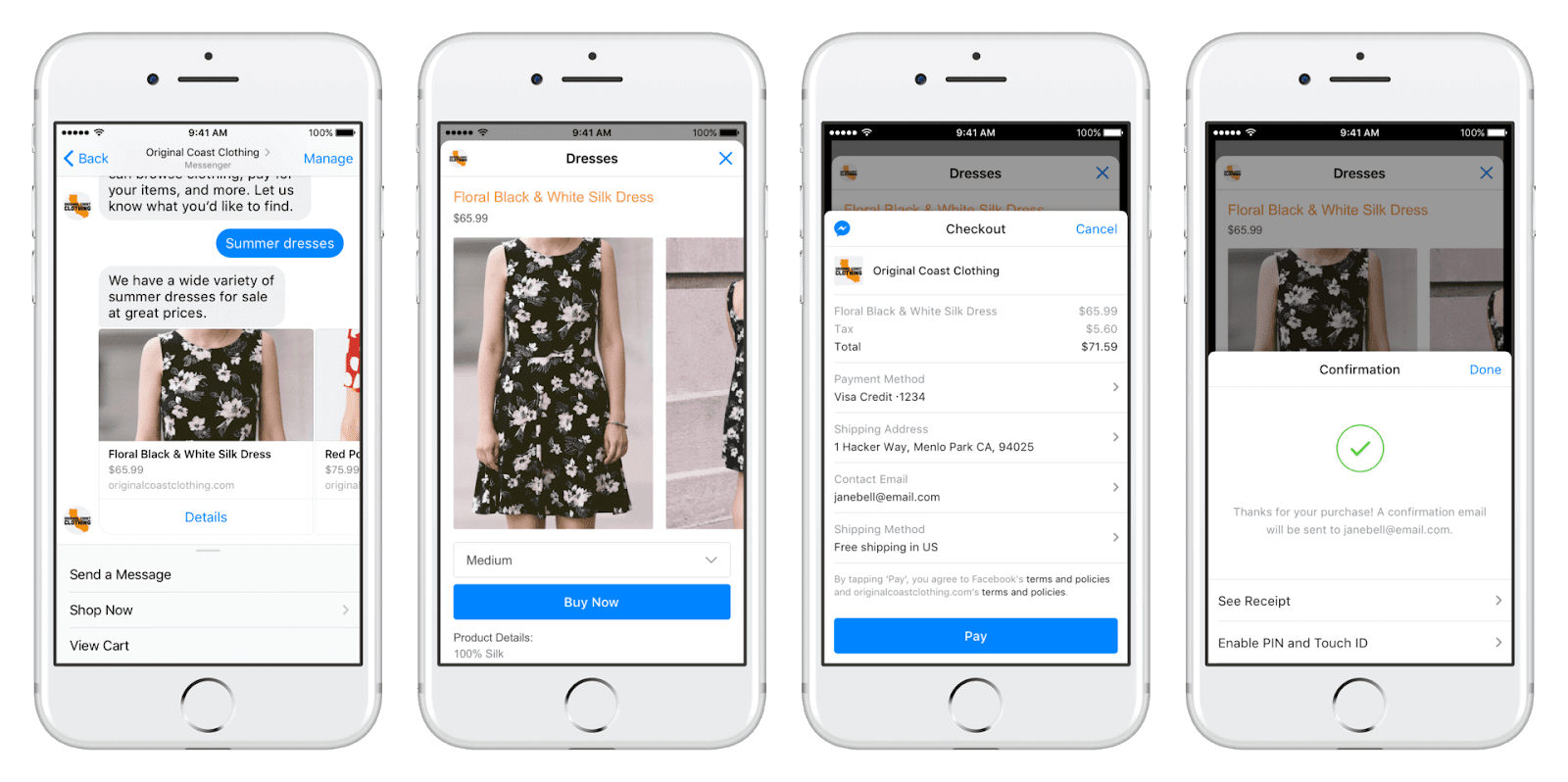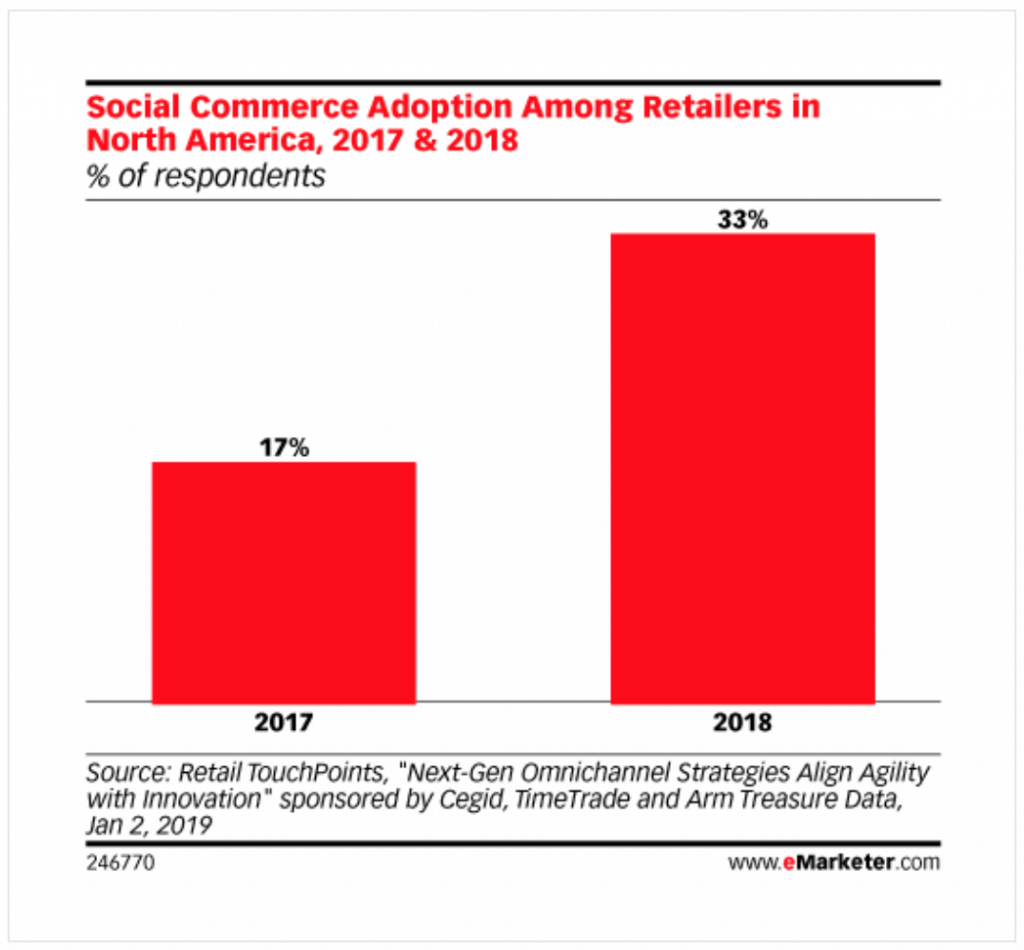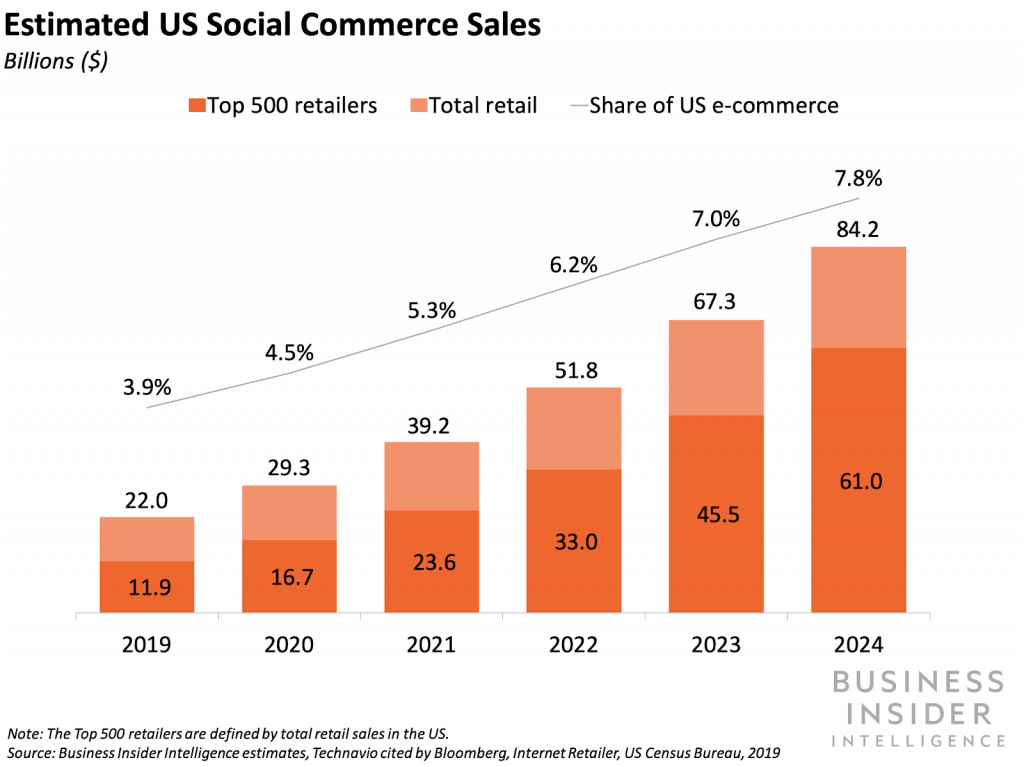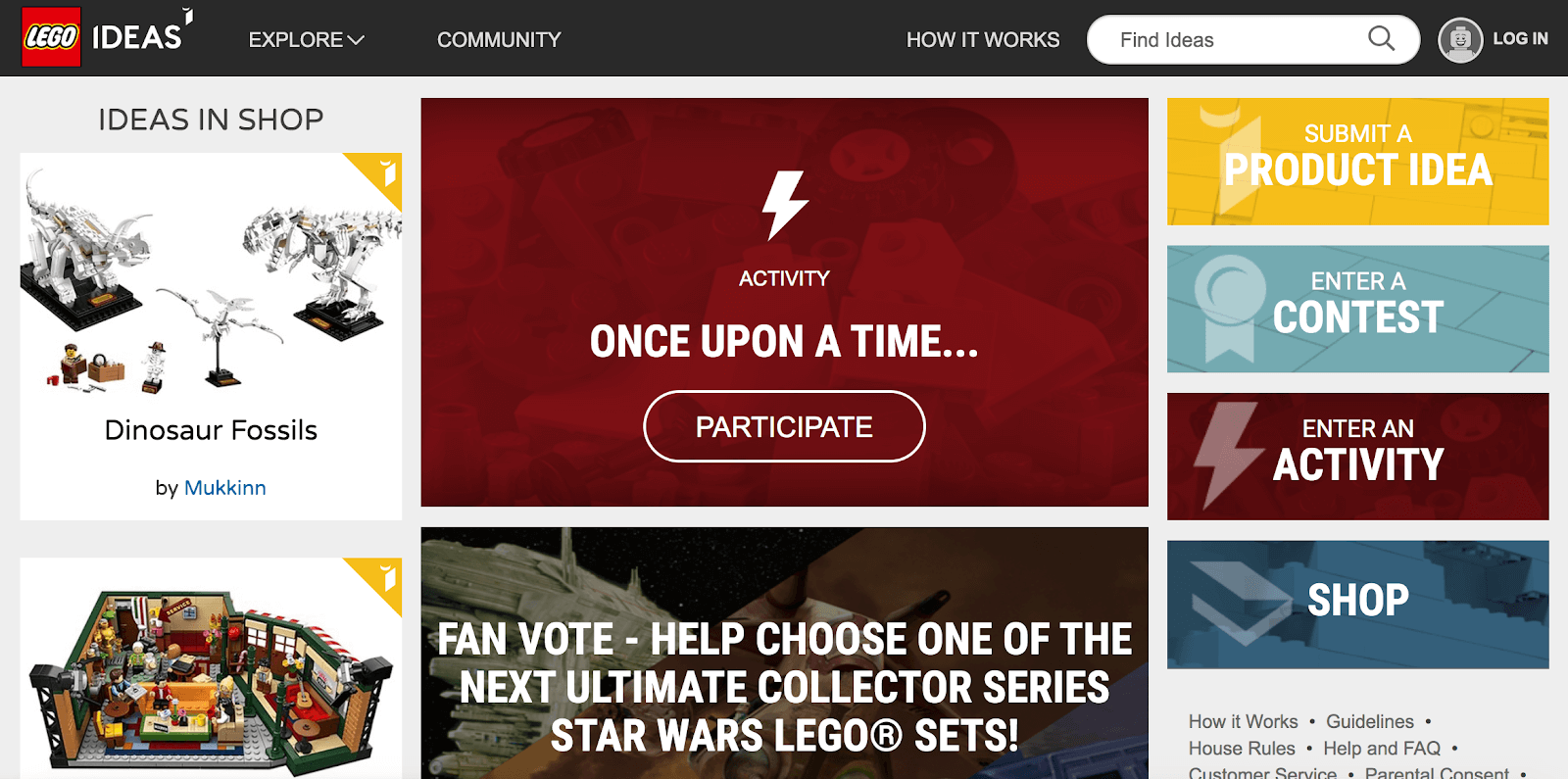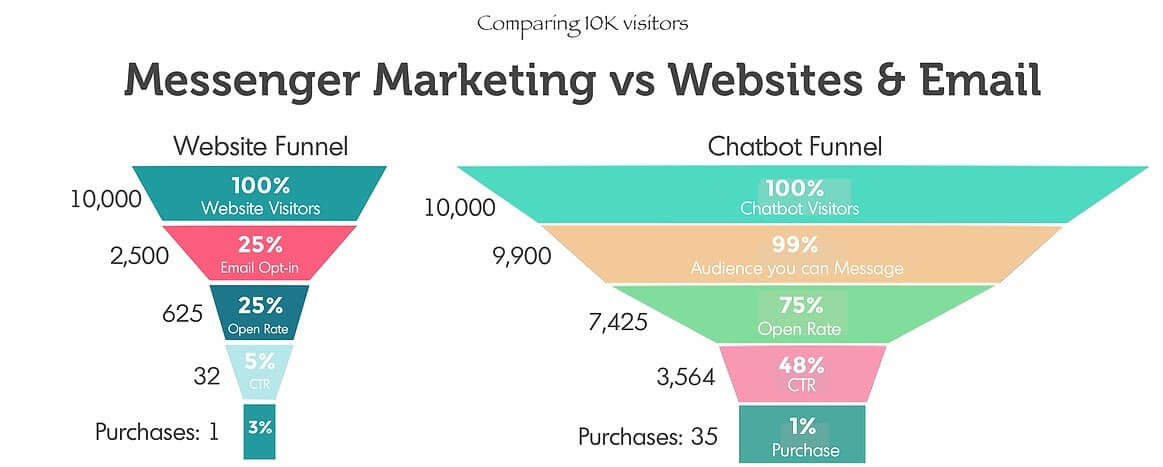Since Yahoo! coined the term “social commerce” in 2005, the eCommerce industry has waited on tenterhooks for it to take off. Unfortunately for retailers and online shoppers alike, its growth has been a little stunted.
But with 2021 being touted as the year social commerce finally finds its foothold, what should eCommerce businesses be doing to prepare for change?
In this article, we’re going to unpick everything you need to know about social commerce, so you can answer questions like…
- What is social commerce?
- Is social commerce really an important trend?
- What is the process of social commerce?
- What social commerce statistics do you need to know?
- How do you build an effective social commerce strategy?
- What are the benefits of social commerce for your business?
1. What is social commerce?
In social commerce, businesses sell their products and services through networking sites like Facebook, Pinterest, Twitter, and Instagram. Social commerce differs from eCommerce social media marketing because purchases are made in-platform, and are not directed to off-platform landing pages and websites. When eCommerce traffic hits web pages from social media, we call it social referrals.
Increasingly, social networks are working to provide eCommerce businesses with the features they need to get frictionless social sales in their platforms.
You can see this process in action across the most popular social networks. Over the last two years, the big players have released targeted social commerce features, e.g. Instagram’s Shoppable Posts and Facebook’s Messenger Checkout.
2. Is social commerce really an important trend?
Sometimes it feels like everyone’s talking about social commerce but no one’s actually doing it. And the stats show that growth in this area has been slower than expected.
But, according to eMarketer, between 2017-2018, brands in the United States almost doubled the rate at which they’d been adopting social commerce…
This means more businesses than ever are investing in this up-and-coming sales channel. And, despite some initial teething problems, top pundits now expect total social commerce sales to continue to grow year on year.
3. What is the process of social commerce?
In the simplest terms, the process of social commerce goes like this:
- Build your presence on social networks
- Connect with your audience in-platform
- Create a two-way conversation with potential consumers
- Convert them into shoppers by driving them to checkout
Businesses do this by creating and managing social media accounts like a Facebook Business Page, LinkedIn Company Profile or Instagram Business Account. They then build engagement by producing great content, connecting their content to their purchase journey and, finally, funneling people to checkout.
4. What social commerce statistics do you need to know?
There’s nothing quite like cold hard data to get your campaign ideas off the ground. So, we’ve selected the 10 most important social selling statistics you need to know for 2021. Use them wisely. And, by ‘wisely’, I mean to make a boatload of cash on social.
- The amount of time users are spending on social media per day is up. According to a report from GlobalWebIndex, by 2018, the average social media user spent 90 minutes more per day in-platform than in 2012.
- A third of US consumers have purchased products in social media. A 2019 survey from Bizrate Insights shows that more than one-third of consumers in the United States had purchased products through social media. And, of the rest, 27% said they would be interested in doing so in the future.
- Most shoppers use social media to make buying decisions. According to Absolutenet, 87% of eCommerce shoppers believe social media helps them decide what to buy.
- Almost a third of consumers would make purchases within a social media platform. The same report by Absolutenet confirms that 30% of consumers who haven’t bought a product in a social media platform would do so.
- Half of Gen-Zer’s and millennial’s fashion purchases were inspired by something they saw on social media. According to eMarketer, 55% of US Gen-Zers and almost as many millennials (who do half of their fashion shopping on the internet) say their purchases are influenced by social media browsing.
- Most social referral traffic hitting eCommerce sites comes from Facebook. But, according to eMarketer, Instagram and Pinterest are the most contextually relevant sites for social commerce.
- The average value of a purchase on social media is still below $100. According to Statista, the average value of an order taken through social media was $79 USD in 2019.
- UK consumers are the least likely to have made a purchase because of a social media advert. Data from Statista shows that 42.8% of UK consumers have never made an online purchase because of an ad they saw on social media, compared to just 20.4% in Russia and 4% in Turkey.
- 50 percent of online shoppers say they follow shops on social media for the discounts. More data from Statista confirms what most of us suspected… that half of all our followers are only keeping an eye on our social media activity to get free or cheap stuff.
- Most Instagrammers use the platform to discover and learn about products and services. According to 2019 Facebook Business stats, 83% of Instagram users use the platform to discover new products and services, 81% to research them and 80% to decide whether to buy.
5. How do you build an effective social commerce strategy?
An ‘effective’ social commerce strategy is one that drives sales. And to get people to purchase, you need to peak engagement and have a solid sales funnel in place. The funnel strategy you use will depend on the platform. But a lot of the usual tactics for generating engagement with your business still apply. Let’s take a look at the most important ones.
Run promotions, giveaways and competitions
As stat number 9 above shows, a huge proportion of your audience only follows you on social for the discounts. So, give them some!
There are two types of consumers, 1) those who like to purchase hot products at full-price, 2) those who really just want a bargain. You don’t have to run near-constant promotions, but switching it up between contests, giveaways, and straight-up discounts will keep this sizable portion of your followers engaged.
If you follow Wagamama, you’ll notice they run small giveaways and competitions throughout the year and go all-in on one super-competition annually.
Harness influencer marketing to amplify your voice
All influencer marketing, from celebrity to nano, should be on the table when you’re planning your social commerce strategy. Of people who buy on social networks, 49% rely on influencers for product recommendations.
Try using contextual and ‘challange’ hashtags like #realoutfitgram, #outfitshare and #stylebiteschallange alongside branded hashtags like #tomsshoes.
Ask your audience to vote on product styles and ranges
People feel more invested in the end product when they’ve been involved in its production. So, one way to build interest come sale day is to ask for your audience’s opinion during design.
You could ask potential consumers to choose their favourite fabric, colours or style for an upcoming product line. And then keep them up to date throughout the production process. Take some pointers from LEGO’s big-hitting Ideas Community…
… and allow people to submit their ideas directly to your team. You don’t need a dedicated web page, running a quiz on Instagram Stories (or similar) will do the job.
Once that product hits the shelves, you’ll have a hyper-engaged audience that’s primed to buy.
Create shoppable content
When the platform allows, make sure you create plenty of shoppable content. You don’t need to have access to beta Shoppable Posts features to create shoppable content. Just take a look at what Joules and other brands have been up to…
It’s all about getting creative with the features you have. But, try not to bombard your audience with purchase cues. Keep working on warming them up with a wide range of content.
Encourage UGC (user-generated content)
User-generated content is one of the pillars of social commerce. Everything from placing a review to joining in with a hashtag campaign is considered UGC. Branded and product hashtags are a mainstay of Instagram and can turn customers into brand advocates and salespeople.
Just take a look at this UGC post created by user knitwitsandyarns and directed at brand #woolandthegang.
Seeing a product in action is valuable in itself. But consumers trust what other consumers have to say more than the brand itself.
Drive traffic to an automated checkout
Automation plays an essential role in social commerce and it usually means one of two things:
- Streamlining social customer service
- Creating chatbot funnels
The first is all about creating a seamless, in-platform customer service experience that starts with a person’s first impression of your brand and can end with a purchase.
The second is all about creating in-platform sales funnels using chatbots. Both convert better than website-based sales funnels.
But remember that most consumers prefer to talk to actual people over AI. So, while chatbot funnels can be effective, mixing automation with live customer service representatives is always the preferable approach.
Create more video content
Most Millenials and Gen-Zers prefer video to other forms of content. According to a 2018 study by Vidmob on the State of Social Video, Millennials spent 33% of their digital time-consuming video content and Gen-Zers 41%. That’s a very significant share.
6. What are the benefits of social commerce for your business?
You’d be forgiven for thinking the only benefit of social commerce is making more money. But you’d be missing a few important pieces of the picture if you did. A good social commerce strategy can yield far more for your business.
Reach more consumers
If your business doesn’t have much of a social presence, you’ll need to ramp it up to implement a social commerce strategy. Whether you start new profiles on new networks, or do more with ones you already have, you’ll inevitably reach more consumers than before.
Access consumer data
All social networks offer business users some degree of access to user data. Meaning you can better target your campaigns to meet the preferences and needs of your ideal customer. And, you can continue to collect and use data about their behaviour throughout the journey to purchase, e.g. with Facebook’s Audience Insights’ ‘People connected to your Page’ feature.
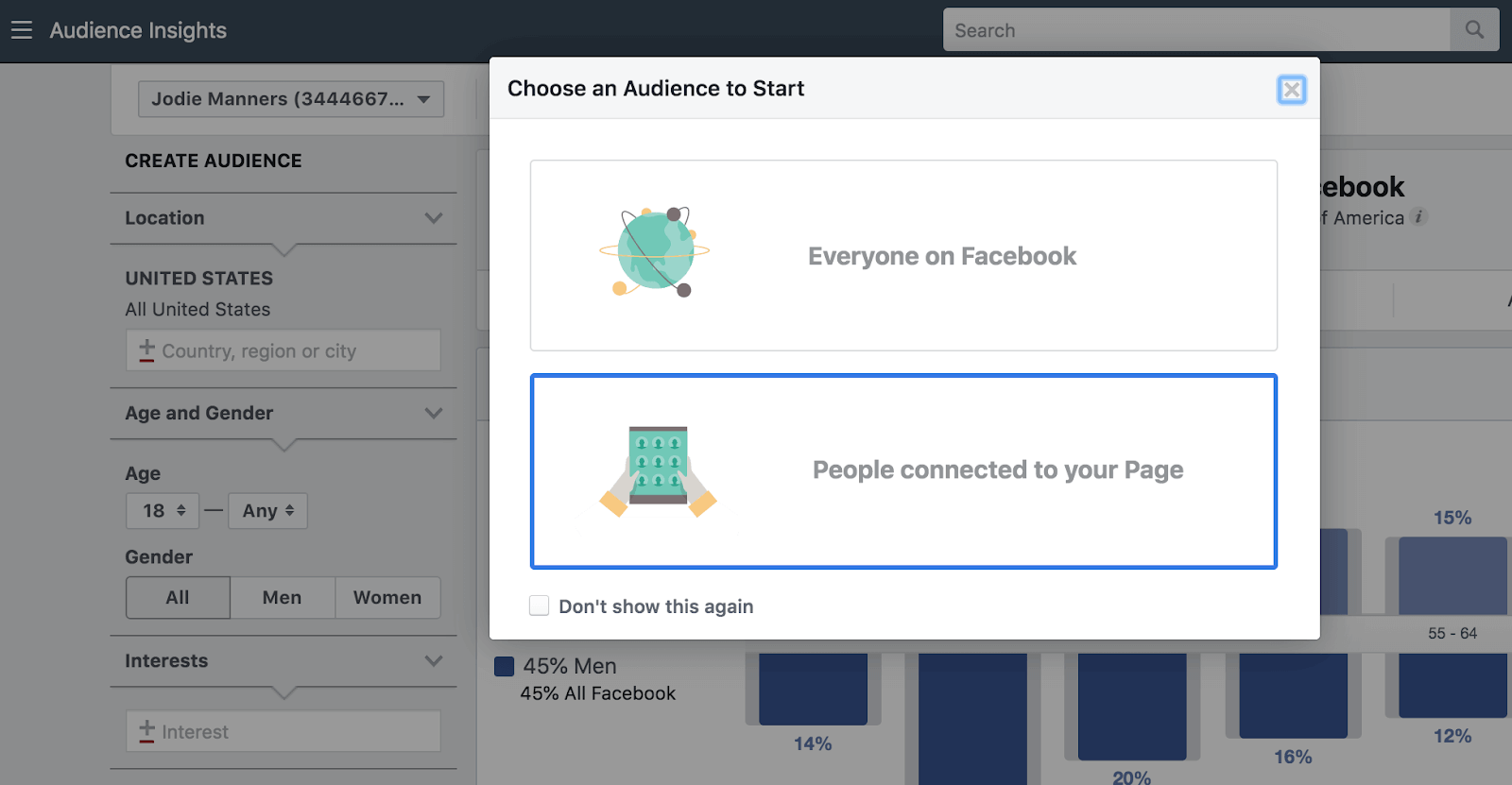
You can then feed this data back into product development, marketing or sales.
Engage more consumers
To execute a successful social commerce strategy you’ll need to encourage and participate in a two-way conversation with your audience.
Unlike traditional marketing, where adverts tell potential consumers something about the business, social commerce relies on reaching out to meet your audience where they are and offering them what they need to move along the purchase journey. Which makes your interactions far more engaging than, say, a billboard or TV ad.
Create brand advocates
Consumers are far more likely to engage with a brand on social media than in any other context. This means you can build the kind of relationship with your audience that turns them into brand advocates. These brand advocates then act like salespeople for your business.
Keep up with changing trends
When eCommerce businesses are active on social media, they become attuned to the trends their audiences follow. We’re talking rising hashtags, emerging fashions, viral challenges and more.
Businesses can feed this information back into product development and digital marketing to drive sales across all platforms.
Provide better customer service
When you sell directly through social networks, you better be prepared to provide top, in-platform social customer service. Research shows people prefer to contact brands through social than traditional mediums. And, if you get it right, you’ll be meeting both their purchase and customer service needs at the same time.
Social customer care
Deliver timely responses to your ecommerce customers in social media. Manage unlimited Facebook, Instagram, Twitter and LinkedIn pages in a single inbox.
Try NapoleonCat free for 14 days. No credit card required.
Cut initial eCommerce costs
If your business is just starting out, you might not want to stump up the kind of money that a full eCommerce website would cost. But, if you can start on social and drive some sales in-platform, your other brand real estate can wait until your business is a little more established.
The takeaway
Social commerce may have had a shaky start, but all of the signs suggest that 2021 will be its year. So, make sure your business is prepared for this up-and-coming eCommerce trend by getting in the know on its what’s, why’s and how’s.
Is there anything we’ve missed that you need to know? Let us know in the comments below.
